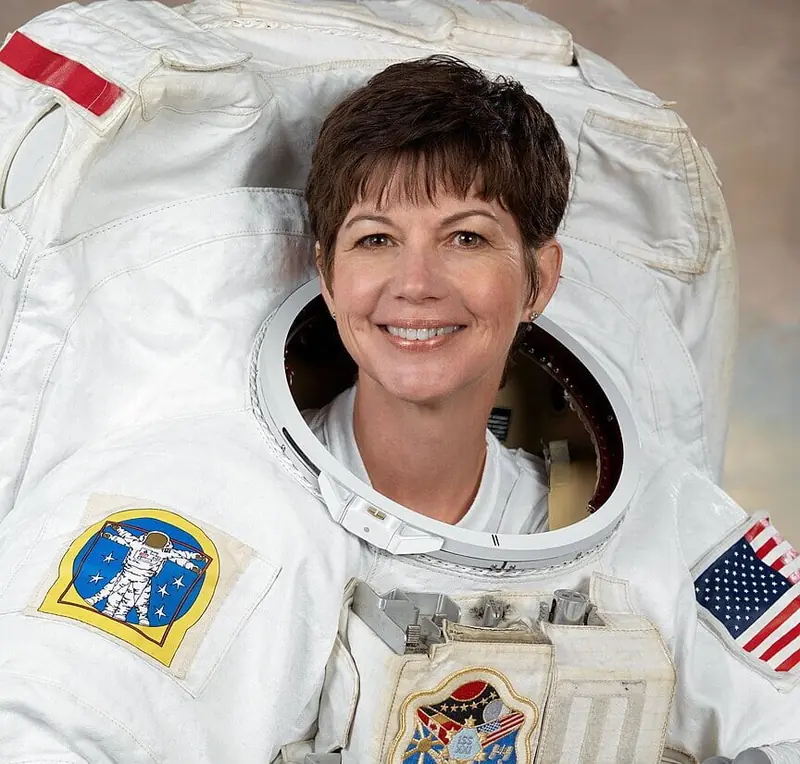
Catherine (Cady) Coleman is the NASA astronaut who advised actress Sandra Bullock during her filming for Alfonso Cuarón’s “Gravity” (2013). Later, in her book “The Space Between,” Coleman, who once worked on the International Space Station (ISS), explained that Bullock’s role and the experience of a real astronaut on the ISS are two entirely different worlds.
Catherine Coleman (born 1960) is an American NASA astronaut, a doctor of chemistry, and a former U.S. Air Force officer. She served as part of the 26th expedition aboard the ISS from 2010 to 2011.
The Ability to Function in a Heavy Spacesuit: A Matter of Life and Death
According to Cady, the real life of female astronauts is nothing like the “glamorous” image portrayed by Sandra Bullock in “Gravity.”
Catherine described the painful process of wearing bulky spacesuits designed for extravehicular activity (EVA). In 2003, NASA decided to eliminate the smallest size of the suit. This meant that space explorers were left with only one size, which was supposed to fit everyone but, as Coleman pointed out, “actually fits all the guys.”
She explained that a spacesuit for EVA is unlike any other clothing. “It’s difficult to work inside it, even if it fits perfectly, and when it’s too big—well, that’s another story. And don’t forget, your ability to function inside that suit is literally a matter of life and death,” the astronaut noted.
The process of putting on the suit takes about an hour and can only be done with the help of a team of specialists. First, an adult diaper is worn. It may not be necessary, but it’s a precaution just in case. Next comes a standard sports bra, which “almost always shrinks beyond recognition in NASA’s industrial dryers.”
The next layer is long underwear that wicks away sweat and provides extra cushioning against the suit’s rigid edges. Then comes the critically important garment—the LCVG (Liquid Cooling and Ventilation Garment). This is a kind of jumpsuit woven with numerous tubes carrying water, resembling large veins.
“When you’re moving inside a roughly 130-kilogram suit, your body heats up quickly, and the LCVG allows you to regulate your temperature using a hard-to-reach handle on the front,” Catherine Coleman explained.
Almost There—The Full Suit?
The suit also includes elbow pads, knee pads, 8-centimeter thigh pads, a 10-centimeter groin pad, and a special belt. Only after this can the main part of the suit be put on.
“Since my agility is already limited by the water tubes pressing against my long underwear, I plop down and wriggle forward into the lower part of the suit until my legs are inside the boots. Then, with a loud ‘one-two-three!’ the technicians help me to my feet,” the astronaut writes.
She continues: “Supported by the brave technicians in the suits, I walk a few feet and climb onto a platform where I see the upper part of my suit attached to a rack. Bending down and tilting my head and shoulders back, I slide into it, first sticking out my arms and then my head, like a turtle. The technicians connect the upper and lower parts. They also place a communication cap on my head to help me communicate with Mission Control.”
The Final Phase—Gloves and Helmet
“I slide my fingers into the glove liners, making sure the seams are turned outward, and push each finger into the corresponding slot. Then I put on the large gloves that secure,” Catherine Coleman notes, suggesting that the end of this multi-step process is near. Finally, it comes down to the helmet.
As Cady explained, if your nose itches, you won’t be able to scratch it for the next few hours.
“I look nothing like Sandra Bullock in ‘Gravity,’ who slips into her suit wearing little black shorts and a tank top before heading to the stars. Instead, I resemble an awkward Egyptian mummy just out of a tomb,” Coleman jokes.
Sandra Bullock during her filming for Alfonso Cuarón’s “Gravity” (2013).
Typically, EVA training takes place in a pool and lasts for six hours. It requires immense concentration. When astronauts dive underwater, they often don’t notice the discomfort from their suits.
At the end of the session, the astronaut removes each layer of clothing in reverse order, as reported by the Daily Mail.
“I always marvel when I see myself in the mirror afterward. My arms and legs are covered in red and purple bruises and scrapes. My nail beds often get damaged, sometimes leading to nail loss,” the astronaut writes.
Fortunately, technology for conquering space is constantly improving. Catherine speculates that “when the first woman embarks on a mission to Mars as part of NASA’s Artemis program in 2025, she will have an upgraded spacesuit.”
